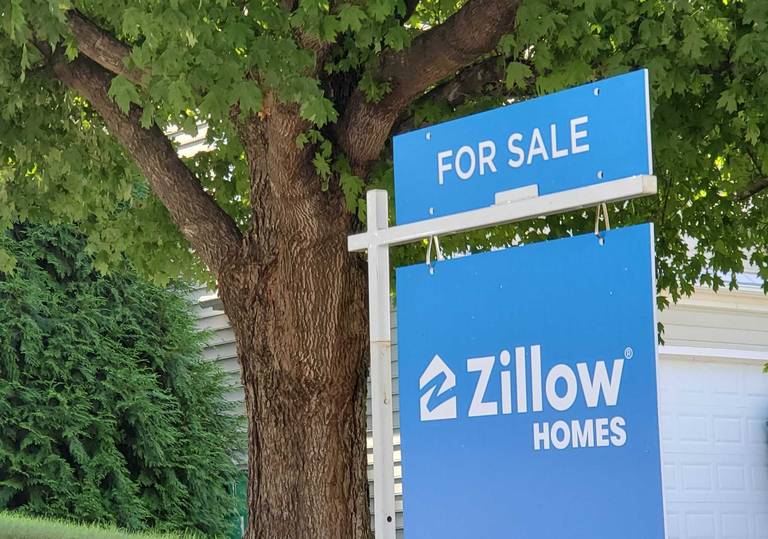For the few of us out there who live under a rock, there’s been something of a cataclysm recently in residential real estate. Zillow shocked the world when they announced are looking to sell 7,000 homes for over $2 billion as well as cut 25% of their work force.
That some big strategical blunder was behind this outcome is clear. The nature of that blunder should leave the RE world both encouraged and wary.
“iBuyer” is a moniker for a new brand of tech companies that leverage big data and algorithmic decision making to purchase residential real estate directly from owners. Zillow is the poster child example for this sort of activity along with companies like opendoor.com and offerpad.com. iBuyers use algorithms to calculate market value and then automatically make offers to home owners looking to sell hassle-free at the proposed price. The aim is to buy in bulk and then either renovate and resell or simply hold and resell for a profit later on as a historically hot real estate market continues to outpace other asset classes.
These ventures are relatively new (Zillow’s iBuyer program was launched just in 2018) but, in a way, long overdue. The real estate market has enjoyed a premium on inefficiency relative to other asset classes in the 21st century. Think the stock market before computer trading algorithms and indexing. Back then, price inefficiencies could be both easily spotted and relatively easily exploited. No more. As the field of investors jockeying for a share in the profits grew deeper and computers and big data became more relevant, pockets of inefficiency were systematically hunted and deflated.
Whereas the stock market has been dissected, systematized, and democratized to a degree that some have begun to wonder if it has permanently lost is dynamism, real estate (especially residential) has remained a veritable wild west of opportunity for investors at all levels of the game.
There are good reasons for this.
Many hurdles to institutional takeover are rooted in the human element of real estate. Residential properties are purchased and valued primarily through the emotional and fickle preferences of current and would-be home buyers. For most, home purchases and sales are the largest transactions that they will make, which makes for a pricing calculus that’s quite a bit more complicated than a quantitive analysis of expected profit and loss.
Another issue is urban in nature. Zillow launched their iBuying program in Phoenix, AZ because the homes and neighborhoods are newer and relatively uniform, which makes for better price predictions. Not so in other major cities… “new” and “uniform” are probably the last superlatives anyone would use to describe the housing options and neighborhoods of Chicago or NYC.
This price variance in RE — which can be as granular as street by street — makes a difference. While Zillow has publicly supported it’s Zestimate (it’s estimation of the value of homes) as accurate up to a medium error rate of 6.9% for off-market properties, that margin of error is still simply too high for the sort of aggressive buying that the company engaged in in the last few years. Their tech is good, but the problem is hard. Factors ranging from the accuracy of basic data (such as home features information) to the relatively inscrutable nature of local preferences add enough noise that the Zestimate is a great tool for getting a general idea of value but a bad tool for precisely estimating it.
Given all that, the advantage still lies with the smaller, more traditional players who are able to carve niches in markets and benefit from local human networks and a much more detailed knowledge of the streets that they operate on.
However, Zillow’s initial setback is also a cautionary tale. Before celebrating the billions of dollars of assets that Zillow is now trying to liquidate, the real estate investor should stop and take sobering account of the fact that they accumulated these assets so quickly in the first place. The algorithms that drive these buying programs will only get better with more data and sophistication over time, and Zillow’s activity is a preview of how quickly big companies can move once they’re confident in their methodology.
Further, not all institutions are so concerned about precision. Invitation Homes, the largest landlord of single-family rentals at over 80,000 at the end of 2017, is an example of an index-like investment fund that has its roots in Wall Street style fundraising and generalized asset purchasing. Such groups need not worry about finding home-run deals or, indeed, even doubles or triples as the average return for residential real estate far outstrips alternative investments like bonds and mutual funds. Operating at scale, they can simply snap up any property that generically meets their criteria without much (or any) price negotiation and keep their investors plenty happy with the passive ROI.
So, for the small-fry real estate investment companies of the world, the persistence of low hanging fruit in RE as demonstrated by Zillow’s faux pas should be a sign of encouragement but also an admonition that one should not root expectations too strongly in the errors of a trial and error methodology.
In order to survive in the future, the aspiring RE company would be best off striving to be as good (and as entrenched) as possible now while it still enjoys something of a head start over the inevitable crash of the institutional wave.


Interesting take on what has been going on with Zillow, I’ll be interested to see how this goes for their business over the next 5 years. It seems to me they’re willingness to operate at a loss is becoming a trend for the industry with the larger players. Luckily for the smaller “mom and pop”/local investor this should create a better opportunity for them to easily differentiate themselves from the larger corporations that sellers in my community are becoming more weary of every month.